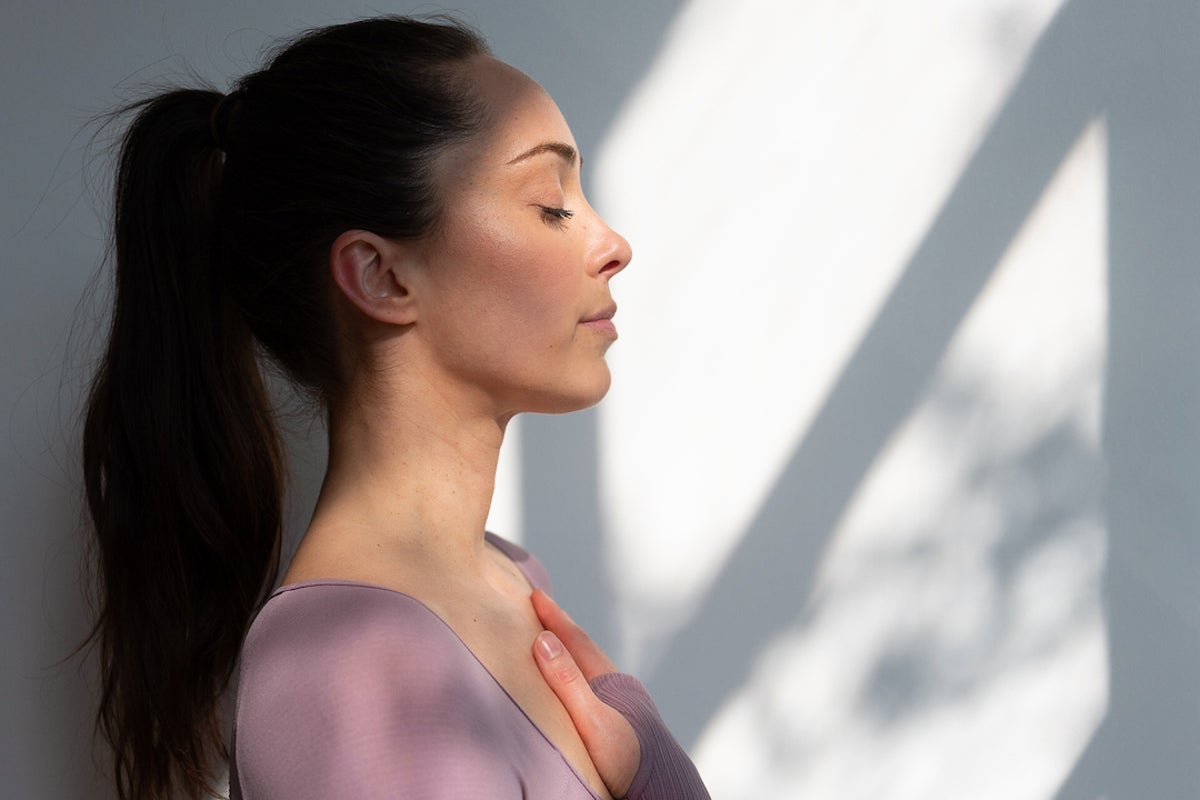
There are several different types of yoga so if you’re planning on booking a class for the first time, it can be challenging to know which style might suit you best.
The beauty of yoga is that anyone can do it. There are styles that focus on moving quickly and bending in impressive ways such as vinyasa and rocket yoga, and there are also slower gentler styles that don’t require much movement at all, like yin yoga and yoga nidra. You can opt for specialist beginner classes, but a great place to start with yoga as a beginner is in a hatha yoga class.
The slower tempo and focus on breathwork make hatha especially grounding and calming. It’s often chosen by those who are new to yoga and as a tool for stress management and mental health support, rather than just a workout.
Hatha traditionally emphasises a balance between the physical practice of yoga and the different poses – known as asanas – and the soothing meditative practice of breathing deeply and clearing the mind – known as pranayama. Hatha often incorporates relaxation and meditation, making it more holistic than many of the purely fitness-focused styles that have become popular in recent years.
What is hatha yoga?
Because it emphasises the core principles of postures, breath, and awareness, hatha is often seen as the “root” practice of yoga. It originated in India and focuses on the mind-body connection.
“Hatha yoga is one of the oldest and most influential branches of yoga,” explains Laura Dodd, founder and director of The Yoga Class. “Traditionally, it combined postures, breathwork, and meditation to prepare the body and mind for deeper states of awareness. In modern classes, it usually means a slower-paced, steady practice with an emphasis on alignment, breath and balance.”
“Yoga has deep roots that branched in different directions. Patanjali’s yoga sutras outlined Ashtanga yoga as a philosophical and meditative path, while hatha yoga emphasised physical practices. Modern styles like vinyasa, power, or yin yoga grew from these two traditions, adapted in the 20th century to meet a variety of needs – from fitness to relaxation,” she adds.
Mike Julian, senior teacher at MoreYoga adds that, “historically, the Saskrit word ‘hatha’ literally translates to ‘force’ and it referred to all physical forms of yoga. In modern times, it refers to the style of yoga in which asana (postures) are held for a longer period of time compared to vinyasa flow and similar styles, but not as long as in yin yoga”.
Julian explains that hatha is a great all-rounder for both experienced yogis and first-timers alike and it really shows the breadth of what’s possible in yoga: “A regular hatha practice will improve your balance, flexibility and strength, physically and mentally. It will bring about a better mind-body connection which will help in managing depression, anxiety, stress and other mental health issues, and it will also allow you to sit for longer in meditation, which is ultimately what yoga is about.”
Read more: 11 best yoga mats for at home and in the studio

Is hatha yoga good for beginners?
“Yoga is for every body and everyone can benefit from hatha yoga,” says Julian. He points out that if you're interested in learning more about how to do the postures ‘correctly’, then a hatha class is a great place to learn more. In hatha, the functions of every movement are important. This style of yoga is less about showing off and overextending and more about being mindful about good form for each posture and the broader benefits of yoga – like stress management and resilience.
“Hatha is suitable for all levels,” he adds. “There is less of an emphasis on flowing between postures and more focus on correct alignment. It is often much slower than other styles, so it is particularly suited towards beginners who might get confused by the constant movement in vinyasa flow. However, a good hatha class should challenge practitioners of all levels, as there are many ways to modify the postures in order to make them easier or more challenging.”
Yoga can be a great starting point for physical and mental fitness more generally. These days, the discipline might be associated with luxe yoga pants and expensive studio sessions, but all you really need to get started is a decent mat and your body. Yoga also requires patience – some of the poses can feel strange or challenging for the body in the beginning and it can be tricky to get the hang of breathing patterns and meditation, however, those who practice regularly are usually surprised at how quickly they start to see results.
“Hatha is an accessible entry point, especially for beginners or anyone wanting a calmer, more foundational practice. It’s adaptable to different bodies and abilities, and with modifications or props, almost anyone can participate,” says Dodd.
Hatha yoga builds flexibility, strength and balance in a sustainable way. “It also reduces stress and encourages presence through breath and movement. And it provides a foundation that makes other styles of yoga easier and safer to explore,” she adds.
So, if you’re unsure where to start with yoga, a hatha class – whether online or in a studio or class – could be the perfect place.
Do these four yoga moves to avoid and soothe back pain, says yoga expert
The science-backed exercise method that can help fight the effects of ageing
What is sound healing and does it have benefits for wellbeing?
I tried the Royal Navy’s new fitness test – and it wasn’t what I expected
Do these four yoga moves to avoid and soothe back pain, says yoga expert
Doctor recommends this simple three-ingredient recipe for improved gut health







